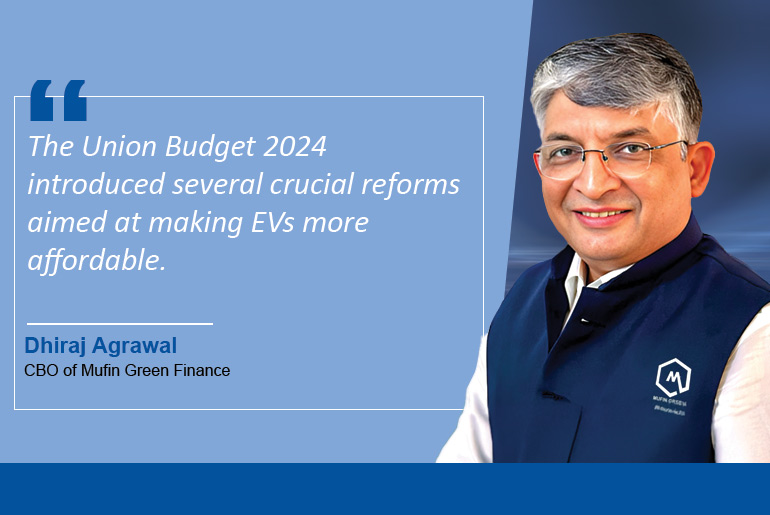India’s electric vehicle (EV) ecosystem is undergoing rapid transformation, driven by government ambition and growing consumer awareness. The country aims to make EVs account for 30% of all new vehicle sales by 2030. However, current adoption levels are modest, with EV penetration at just 7.4% as of 2024, according to a report by the Energy Economic Times. One of the most significant roadblocks to faster adoption is the high upfront cost of EVs, with battery prices making up nearly 40% of the total cost of the vehicle. But a new shift is underway—battery financing—which has the potential to redefine affordability and accelerate EV uptake across India.
The Financial Hurdle of EV Adoption
Electric vehicles, while cost-effective over time due to lower maintenance and fuel costs, are still considered expensive at the point of purchase. For instance, the Tata Nexon EV, one of the best-selling EVs in India, remains significantly costlier than its internal combustion engine (ICE) version even after government subsidies. A major reason is the lithium-ion battery, a component heavily influenced by global material prices and logistical challenges. The high initial cost continues to deter price-sensitive Indian consumers despite an increasing awareness of environmental benefits.
Battery Financing: A Game-Changer
This is where battery financing enters the equation as a transformative solution. Battery-as-a-Service (BaaS), an emerging model, allows consumers to buy EVs without the battery and instead lease it separately. This not only reduces the initial cost of the EV by up to 40% but also spreads battery expenses over a longer period, making ownership more accessible. MG Motor India has started experimenting with this model. In partnership with JSW Group and China’s SAIC, it now offers customers battery rental plans at ₹3.5 per kilometer with a minimum monthly commitment. This arrangement drastically lowers the vehicle’s sticker price and removes concerns around battery replacement and degradation.
In addition to battery leasing, other OEMs are rolling out incentive packages. Tata Motors, for instance, is offering discounts and six months of free EV charging at over 5,500 stations for its Punch and Nexon EVs. These offers bring down prices by 10–20% and aim to make EVs price-competitive with their petrol and diesel counterparts.
Policy Support and Tax Reforms
The Indian government has played an instrumental role in encouraging EV adoption through targeted policy interventions. The Union Budget 2024 introduced several crucial reforms aimed at making EVs more affordable. One of the biggest announcements was the reduction in the Goods and Services Tax (GST) on EVs from 5% to 3%, thereby reducing the overall vehicle price. Another significant measure was increasing the tax deduction limit under Section 80EEB of the Income Tax Act from ₹1.5 lakh to ₹2 lakh for the interest paid on loans taken to buy EVs. These changes are expected to boost demand by making financing more attractive.
Further policy measures include the waiver of import duties on 25 critical minerals—such as lithium, cobalt, and graphite—that are essential for battery manufacturing. This move is likely to reduce battery prices by more than 20% over the next year. The Production-Linked Incentive (PLI) scheme has also been expanded, with ₹3,500 crore allocated in 2024–25 to support domestic EV and battery manufacturing. These measures not only reduce costs but also encourage local production, which can insulate the market from international price shocks.
Innovative Financing Models and Collaborations
Banks and NBFCs are also entering the EV financing space with tailored loan products. They now offer lease-to-own models, extended repayment terms, and interest subsidies for green vehicle loans. For instance, a typical ₹1.2 lakh battery loan at 16% annual interest for 24 months comes to a monthly EMI of around ₹6,600. With new schemes, this EMI could come down with subsidized interest rates and flexible repayment options, particularly for those purchasing vehicles for commercial purposes.
Startups and FinTech players are also contributing to the financing revolution. Companies like Revfin are using alternative credit assessment models to serve low-income and first-time borrowers. Active in over 24 states, Revfin has disbursed more than ₹1,000 crore in loans to over 75,000 customers, many of whom lack conventional credit histories. Their psychometric evaluation methods allow them to cater to rural and underbanked populations, helping democratize access to EVs.
Challenges on the Road to Mass Adoption
While battery financing is promising, challenges persist. India’s EV infrastructure is still in its infancy. As of early 2024, there is only one public charging station for every 135 EVs in the country, compared to one for every 20 EVs in leading global markets. This uneven distribution hampers rural and tier-2 or 3 city adoption. Furthermore, the recent shift from the FAME-II subsidy scheme to the new PM-eBus Sewa scheme led to a decline in subsidies for electric four-wheelers, which has caused a temporary disruption in demand and impacted OEMs’ strategies.
Nonetheless, future schemes could reverse this slowdown. The proposed FAME-III scheme, with an expected budget outlay of ₹10,000 crore, promises more comprehensive support. It is expected to focus not only on vehicle subsidies but also on charging infrastructure, battery recycling, and energy storage capabilities. In parallel, the inclusion of EVs in the Reserve Bank of India’s priority sector lending list is being considered, which could channel more institutional credit into the sector.
Conclusion
Battery financing is poised to be the cornerstone of India’s EV affordability strategy. By decoupling the cost of the battery from the vehicle and introducing flexible financing and rental options, the Indian EV market can overcome one of its biggest barriers—high upfront cost. Backed by supportive government reforms, technological innovation, and novel financial models, battery financing has the potential to change the way Indians view EV ownership. As ecosystem players continue to collaborate and infrastructure gaps are addressed, the country is likely to see EV adoption move from niche to norm in the years ahead.

